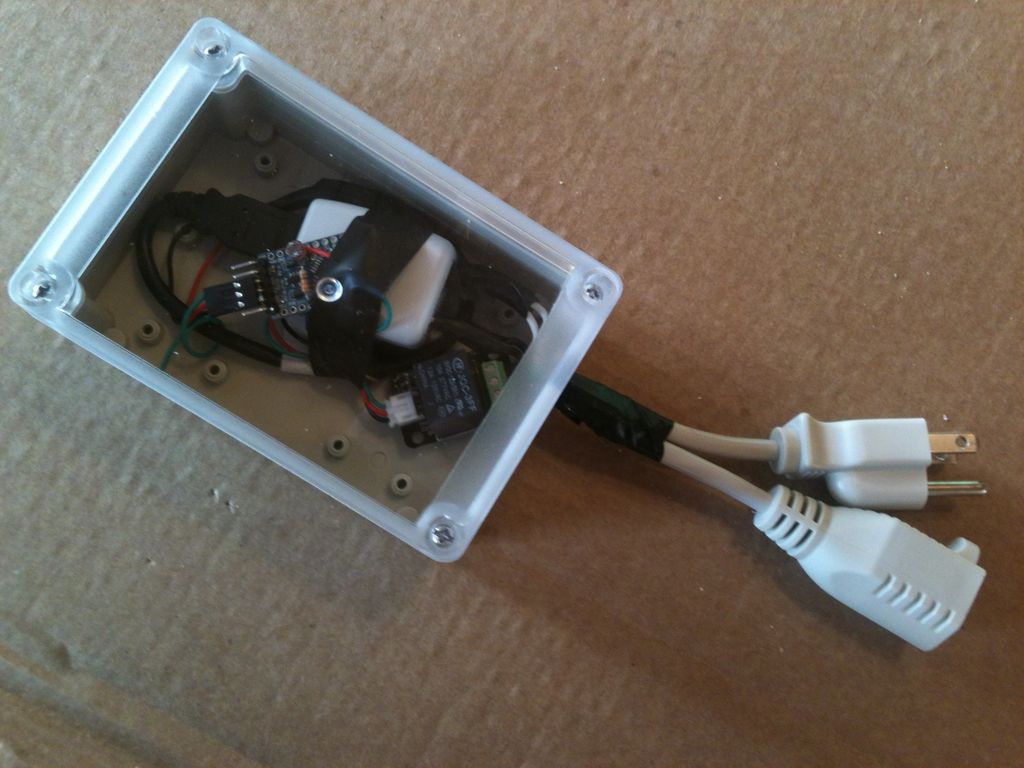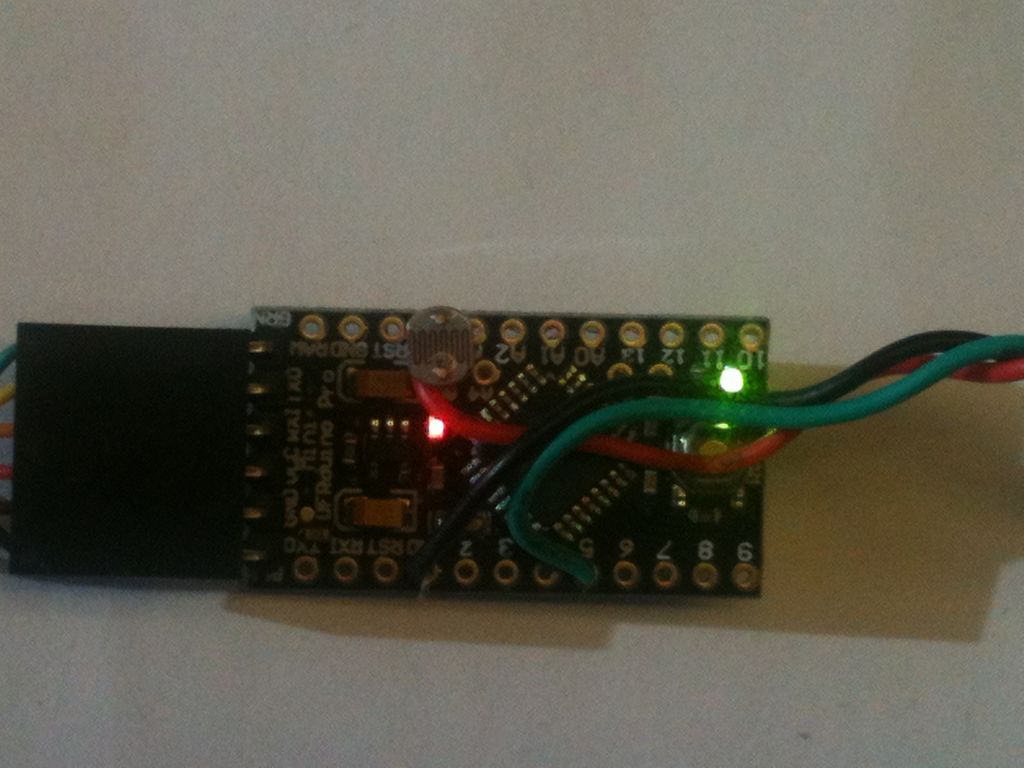This instructable will detail how to make a switch that uses an arduino to sample light. When the light sample reaches a threshold it will trigger a relay that can be used to turn on/off a small appliance (light, radio, fan, etc…) The parts for this instructable can be ordered as a kit:
http://www.jameco.com/webapp/wcs/stores/servlet/Product_10001_10001_2209967_-1

Step 1: Review relay and prep wire
unpackage the relay and stretch out the cable. this cable is used to activate the relay but will also be used to power the arduino. cut the wire in about two equal parts. the part with the white clip end will plug into the relay and be soldered into the arduino. the wire with the black clip end will be spliced into the usb cable to supply power to the arduino. this is also a good time to review the relay tutorial for safety information: http://www.dfrobot.com/wiki/index.php?title=Tutorial:_DFR0017_V2_Relay
Step 2: Modify USB cable
Step 3: Identify Arduino
Step 4: Component Layout
Step 5: Solder Arduino
Step 6: Program Arduino

//adjust the lTrigger number for your light values
int lTrigger = 610;
int photoPin = A5; //define a pin for Photo cell
int ledPin=5; //define a pin for relay activator
boolean bLatch = false;
int lLaser = 0;
void setup() {
Serial.begin(9600); //Begin serial communcation
pinMode( photoPin, INPUT );
pinMode( ledPin, OUTPUT );
}
void loop() {
lLaser = analogRead(photoPin);
if (lLaser > lTrigger) {
bLatch = !bLatch;
digitalWrite(ledPin,bLatch);
delay(1000);
}
Serial.println(lLaser); //display photocell value to serial monitor.
delay(10); //short delay for switch bounce
}
test your arduino with the serial monitor open to see the light reading values. adjust the trigger value to a range that works best with your laser pointer.
Step 7: Prepare Power Cord
the power cord is the short extention cord that we will use to power the arduino (with USB block) and the appliance that is switched (with the relay). this cord will be plugged into a power outlet and the electrical properties can be hazardous. please be careful when working with this cord and the relay when it is powered. you will want to cut the power cord a little off of center. to complete the wiring of the relay we will need a short piece (1.5 in) of the black wire. cutting the whole wire a little off center will allow us to cut a piece from the black wire to complete the connection.
